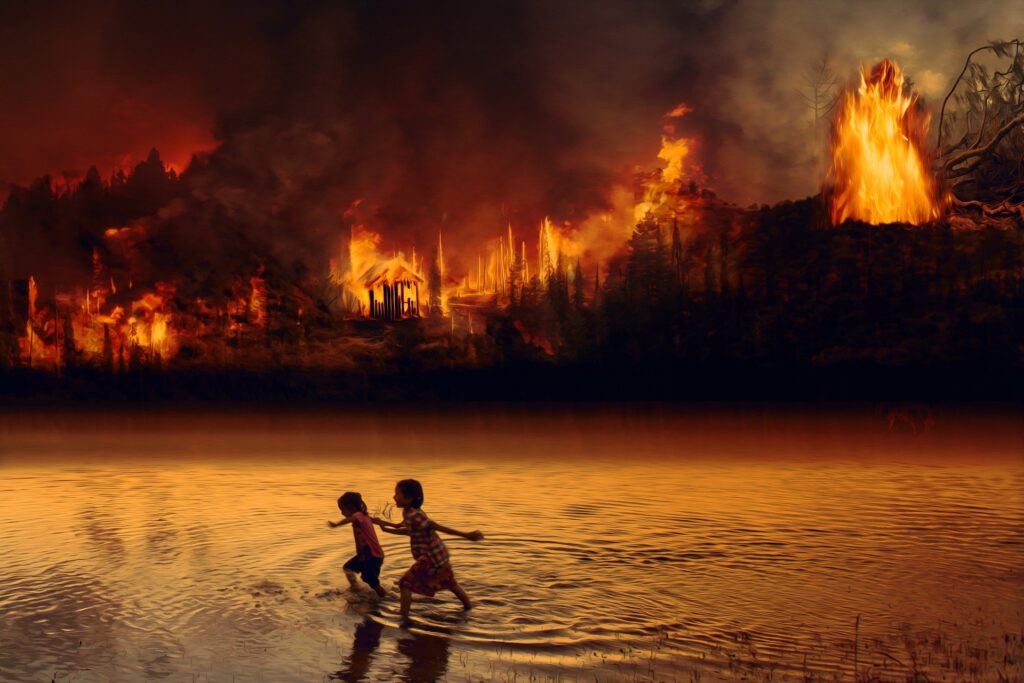Take a walk in your nearest forest. Breathe in its fresh scents, listen to the birds and the breeze rustling through the treetops – chances are that whatever you have been worrying about recently will feel a bit less all-consuming. Science has shown that just two hours of nature a week can have a significant positive impact on our well-being. So why then, are we sheltered from the destructive impact on the world’s forest of what we eat?
Trees around the world – including the rainforests of the Amazon and Asia – are being hacked and burnt to death so that the land they cover can be converted to industrial agriculture, plantations, and cattle ranching.
Estimates show that at the current rate of destruction, rainforests could be gone within 100 years. In some cases, deforestation is a process that is planned over years: forests are set alight, cleared, and eventually converted into profitable food production linked to ingredients in food on shop shelves all over the world. The same annihilation is happening to lush wetlands, hugely biodiverse savannahs, and important carbon sinks like peatlands. Large-scale, industrial agriculture is winning out against nature.
Palm oil, soy, cocoa, coffee, and other products are connected to the conversion of nature to sprawling agriculture. For example, unsustainable soy is a real problem for our planet. Not soy milk or tofu burgers, but yogurt, eggs, milk, chicken, and any products that can be traced back to animal feed. In Europe, soy is used to feed many farm animals because it is cheap and protein-rich. Soy arrives via massive shipments often from Brazil and can come from land that was, just a few years back, buzzing and hooting with the calls of a vibrant jungle or brimming with the life of the Brazilian savannah.
Deforestation pollutes more than most countries in the world
Felling trees have a major negative effect on our planet. Not only does it remove the habitats of thousands of animals, plants, insects, and birds accelerating the biodiversity crash, but it also turns up the heat on our planet. How? First, the process of cutting down trees actually releases the carbon they store into the atmosphere, in addition to the forest fires that frequently accompany deforestation which literally pump out greenhouse gases. If deforestation in the Tropics were a country, it would be the third-biggest polluter in the world, after China and the US.
There is a more subtle, less well-known, effect at work. Deforestation dries up our skies. According to the Yale School of the Environment, trees in forests are like tens of thousands of fountains releasing water vapour into the air. This vapour forms massive aerial rivers which, in the case of the Amazon, are bigger than the River Amazon itself. These “flying rivers” eventually fall as rain in places that can be thousands of kilometres away from the forest.
Without rainforests, there are no fountains and major agricultural zones of the world could dry-up. It is a stark lose-lose scenario we are facing.
Now, more than ever, the time has come to stop deforestation. Recently, I worked with the WWF on a campaign called #Together4Forests. In a show of public support, it gathered over one million signatures backing a new law that would rule out deforestation and nature destruction in products on Europe’s shop shelves. The European Commission is expected to publish a legislative proposal in the first half of 2021 – keep an eye out! I also recommend looking out for similar initiatives, like online petitions to sign, as steps you can take to help slow deforestation.
